|
 |
|
Welcome |
|
Rajasthan
Tours |
|
|
|
|
|
|
|
|
|
|
|
|
|
|
|
|
|
|
|
|
|
|
|
|
|
|
|
|
|
 |
|
|
|
|
|
|
|
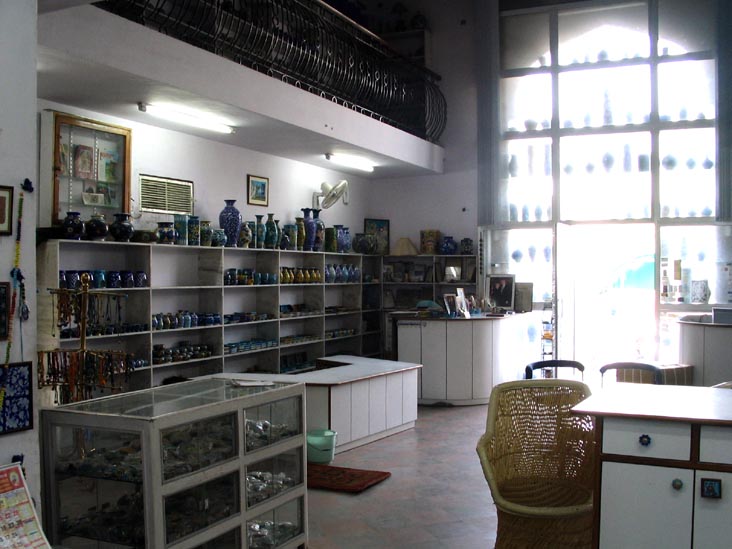 |
|
Blue Pottery, Jaipur |
|
Introduction
of Blue
Pottery |
|
Blue
Pottery is the one of the most well-known item constructed in
Rajasthan. What was once only the luxury of the rich, today has become
an reasonable piece of ornamentation. Today the items made in blue
pottery are available in many colours like pink, yellow and green.
Tourists should not at all miss the shopping of blue pottery. Blue
Pottery is unique in appearance.
The Jaipur blue pottery, prepared from Egyptian paste, is shiny and
low-fired. Some of this pottery is semi-transparent and generally
ornamented with animal and bird designs. Being fired at very low
temperature makes them easily broken. The range of items is primarily
attractive, such as ashtrays, vases, coasters, small bowls and boxes
for trinkets.
The use of blue polish on pottery made from Multani mitti, or Fuller’s
earth is an imported technique, first introduced by Mongol artisans
who combined Chinese finishing technology with Persian ornamental
arts.
Gradually the blue glaze technique grew beyond an architectural
accessory to Kashmiri potters. From there, the technique traveled to
the plains of Delhi and in the 17th century went to Jaipur. The rulers
of Jaipur were limited to blue-glazed ware, and many marble halls in
Rambagh Palace have fountains lined with blue tiles. These tiles were
also used in the building of the city of Jaipur, but they vanished
soon after. This art was forgotten for the want of cheaper and more
durable pottery options as also due to the lack of expert artisans
willing to carry on the craft.
|
|
Shops of Blue Pottery in Jaipur |
|
The shops
where you can buy items of blue pottery are - Rajasthali and other
shops on MI Road and Amber Road in Jaipur. The Kripal Kumb in Bani
Park and Neerja International in C Scheme in Jaipur are also good
places to purchase blue pottery.Some of the items prepared from blue
pottery are glasses, plates, fruit bowls, and tiles with floral
patterns and flower containers. These items are usually priced between
Rs 25 to Rs 10,000 depending upon the size of the item.
The small hamlets of Sanganer, Neota and Mahalan are the places where
you can purchase attractive blue pottery items at a much lesser price.
|
|
How Blue Pottery is obtained |
|
The blue
colour or greenish-blue color is obtained by combination of crude
copper oxide with salt or sugar in a furnace and then filtering it for
use. The dark ultramarine colour is obtained from cobalt oxide. The
common designs are motivated from Mughal era arabesque patterns,
animal and bird designs. The products made comprise soap dishes,
trays, plates, coasters, flower vases, surahis (small pitcher), fruit
bowls, door knobs, and glazed tiles with hand painted floral designs.
The craft is mainly found in Jaipur, and also in Sanganer, Mahalan,
and Neota.
Pottery,is one of the old crafts,and has its own standing custom in
Rajasthan. Certain shapes are characteristic of Rajasthan. Alwar is
famous for its double cutwork pottery known as “kagzi”. It is prepared
from a thin layer of clay and needs a high degree of talent. Purely
decorative, the pottery of Bikaner uses colors embellished with gold
to give a sparkling finish. Blue Pottery of Jaipur is the only pottery
in the world that is made without using clay.
|
|
Persian Art of Blue Pottery |
|
The Persian
Art of blue pottery came to Jaipur from Persia and Afghanistan through
Mughal Courts. Blue Pottery is prepared from quartz and not clay.
Materials that are used comprise quartz, raw glaze, sodium sulphate,
and multani mitti.The major benefit is that blue pottery does not
develop any cracks, and blue pottery is also unaffected, clean, and
appropriate for daily use. Blue pottery is wonderfully ornamented with
the brush when the pot is rotated.
The art of shiny pottery came to India through Persia. The materials
used are Multani clay or 'fuller's earth', quartz, raw glaze, and
sodium sulphate. The best pieces are hand painted with floral or
decorated patterns and sometimes with figures of animals. Besides
traditional articles like 'surahis', pots and cylindrical jars, other
items consist of tiles, flower pots, beads, ashtrays, ear rings, lamp
stands, soap cases, mugs, jugs and door knobs.
You can mark blue pottery being made at Sanganer, not far from Jaipur,
and also within the city at Kripal Kumbh, Shiva Marg. The color
palette is limited to blue derived from the oxide of cobalt, green
from the oxide of copper and white, though other non-conventional
colours such as yellow and brown have jumped into the fight too.
The reawakening of tile-making start in the late 19th century, and
Jaipur became the centre of a booming new industry producing blue
ware. The traditional Persian patterns have now been adapted to
satisfy a more sophisticated clientele. Apart from the predictable
vessels, jars, pots and containers, you'll now find cups ,tea sets,
and saucers, plates and glasses, jugs, ashtrays and even napkin rings.
|
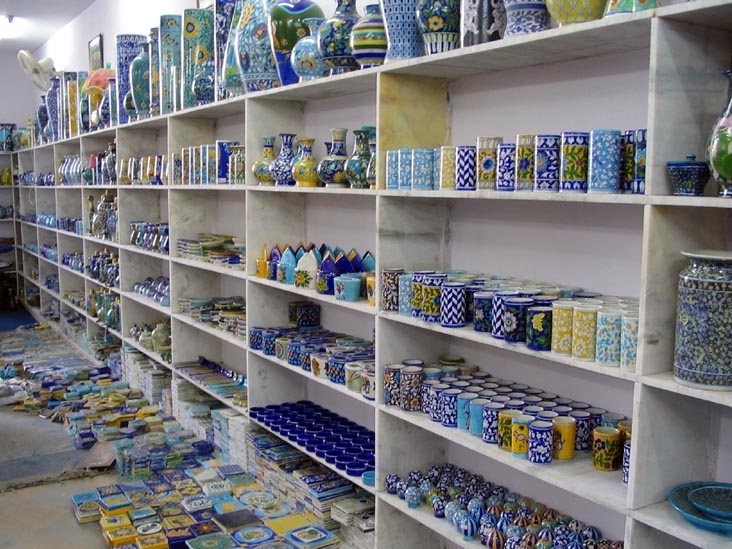 |
|
Blue Pottery of Rajasthan |
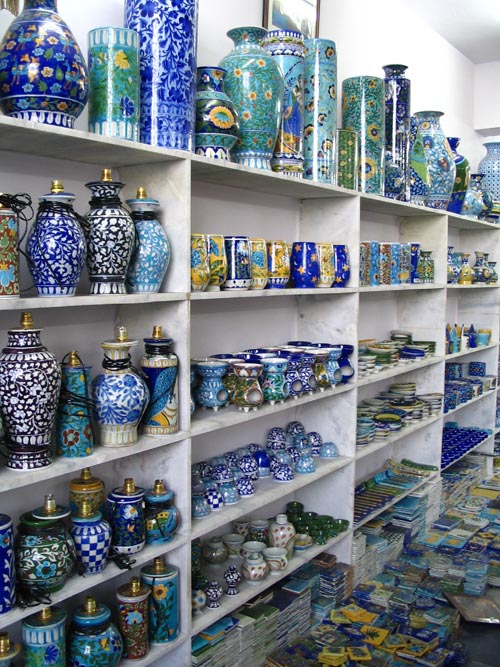 |
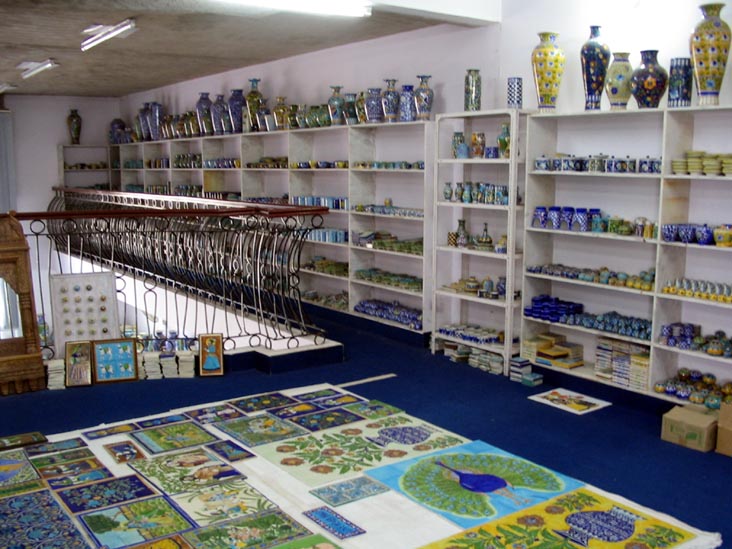 |
|
Blue Pottery of
Rajasthan |
Blue Pottery of
Rajasthan |
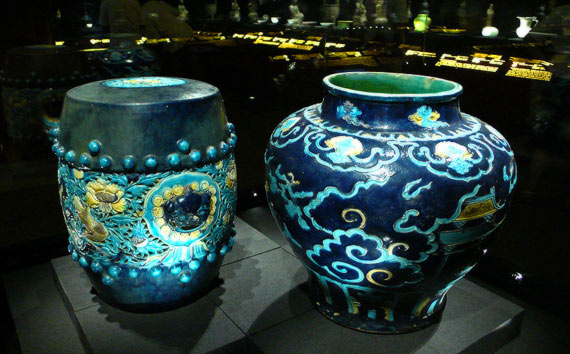 |
 |
|
Blue
Pottery of Rajasthan |
Blue Pottery of Rajasthan |
|
|
|
|
|
|
|
|